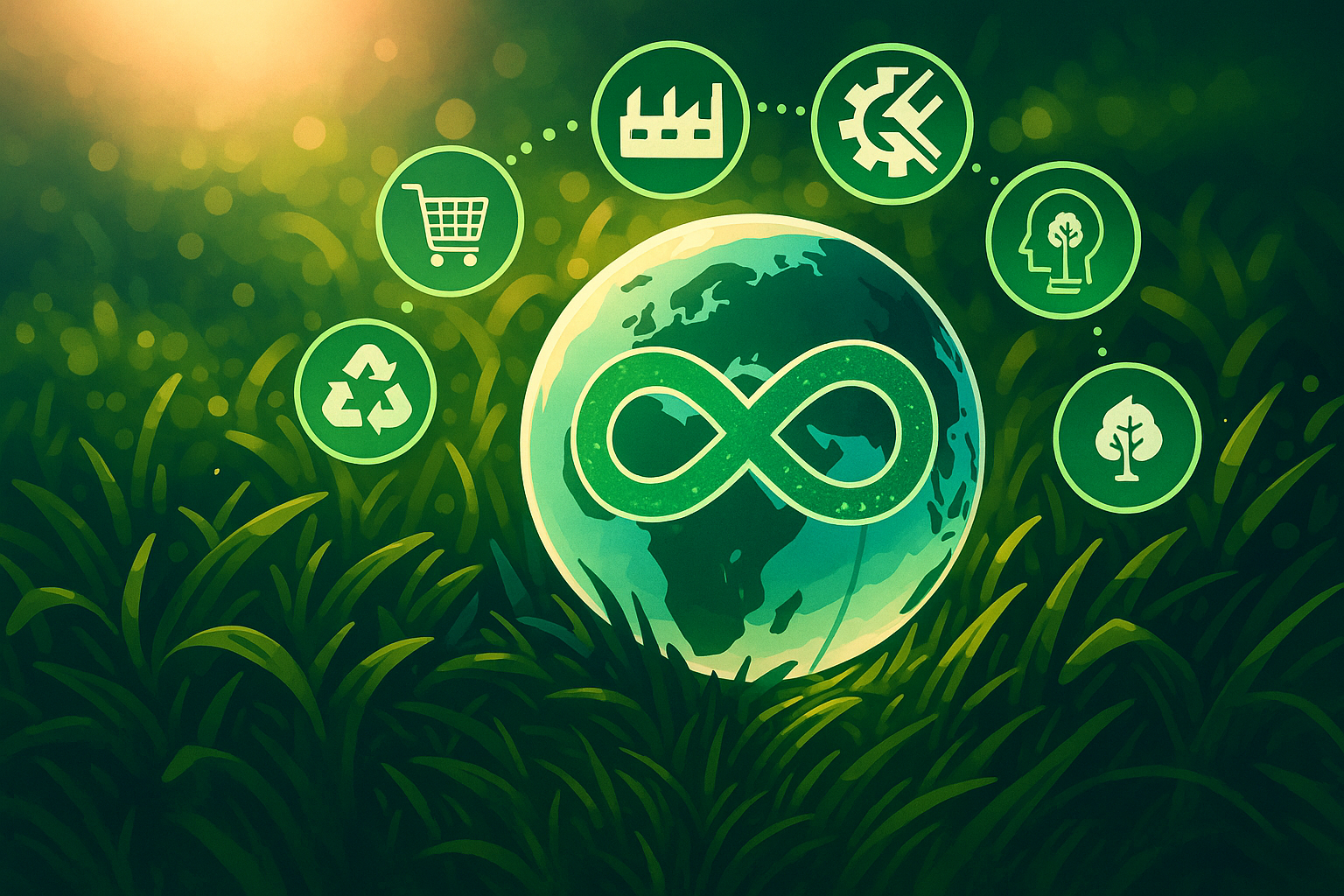In a world facing climate crisis, inequality, and resource limits, endless economic growth is neither realistic nor sustainable. This post explores how post-growth thinking can help build fairer, more resilient economies focused on wellbeing over GDP.
It’s time to rethink the assumption that economies must grow forever.
Dr. Alexandra Block
Growth is not the Goal
For decades, economic success has been measured by one thing: growth. If a country’s GDP rises, it’s considered progress. But what happens when growth brings environmental destruction, deepens inequality, or fails to improve people’s lives?
We are living in an age where climate breakdown, social disconnection, and burnout are the norm. In this context, it’s time to rethink the assumption that economies must grow forever. Post-growth economics challenges this outdated thinking and asks: What if the goal wasn’t growth, but wellbeing?
What is a Post-Growth Economy?
A post-growth economy does not mean zero progress. Instead, it shifts the focus of progress away from increasing output and toward improving lives within planetary boundaries.
Key principles include:
- Wellbeing over wealth: Measuring success by health, happiness, education, and equity—not just productivity.
- Sufficiency over excess: Ensuring everyone has enough, rather than encouraging endless consumption.
- Regeneration over extraction: Designing systems that replenish natural resources rather than deplete them.
- Care and community: Valuing care work, social connection, and civic life as core to economic health.
Rather than chasing growth for its own sake, post-growth economies prioritize resilience, sustainability, and equity.
Why Growth Isn’t Always Good
Economic growth has brought many benefits—improved living standards, innovation, and poverty reduction. But growth also has limits:
- Environmental degradation: Growth-driven models depend on resource extraction, emissions, and pollution—undermining ecosystems and climate stability.
- Rising inequality: The benefits of growth often concentrate among the wealthy, while others are left behind.
- Social costs: Fast-paced economic systems fuel overwork, mental health issues, and the erosion of community life.
In many high-income countries, further GDP growth no longer translates into better quality of life. Instead, it often exacerbates the problems it claims to solve.
Examples of Post-Growth Thinking in Practice
Several countries and communities are already exploring post-growth ideas:
- New Zealand’s Wellbeing Budget shifts the focus of government investment from economic output to health, education, environment, and community connection.
- Amsterdam’s Doughnut Economics Model sets social and ecological boundaries for the city’s development, aiming to meet human needs without breaching planetary limits.
- Community economies across the world—from cooperative farming to repair cafes—show how local, low-impact economies can thrive without relying on continuous expansion.
These models demonstrate that post-growth is not abstract theory—it’s a growing movement of practical, people-focused innovation.
Conclusion: A Future Beyond Growth
Endless growth is a story we’ve outgrown. The future demands new narratives—ones that prioritise care over consumption, equity over expansion, and sustainability over speed.
Post-growth economies offer us the chance to reimagine what it means to live well together. Not richer, but fairer. Not faster, but wiser. Not more, but enough.
